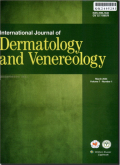Cutaneous Manifestations of HIV/AIDS in the Era of Highly Active Antiretroviral Therapy: Evidence from Bangladesh
Objective::Skin diseases are common and striking features of patients with human immunodeficiency virus/acquired immunodeficiency syndrome (HIV/AIDS) and may vary considerably by ethnic and geographic regions and by the influence of highly active antiretroviral therapy (HAART). However, little information exists regarding the cutaneous manifestations of patients with HIV/AIDS in Bangladesh. This study was performed to elucidate the spectrum of cutaneous disorders in patients with HIV/AIDS in the era of HAART.Materials::This descriptive cross-sectional study was carried out in Chittagong Medical College Hospital, Bangladesh from January 2017 and December 2020. Diagnosed case of HIV/AIDS for HAART therapy and all cases of HIV/AIDS who are already on HAART therapy were included in this study. Descriptive statistical analysis was carried out by using frequencies and percentages.Results::Of 40 patients with HIV/AIDS, 22 (55.0%) were male and 18 (45.0%) were female. The patients ranged in age from 8 to 60 years, with a mean age of 38 ± 0.966 years. Among all age groups, the highest 19 (47.5%) patients were in the 31- to 40-year age group. Most of the patients were migrant workers [22/40 (55.0%)] with low socioeconomic status [32/40 (80.0%)], and the most common transmission mode was heterosexual activity [36/40 (90.0%)]. Most of the patients [32/40 (80.0%)] had mucocutaneous disorders, 30/40 (75.0%) had infective dermatoses, and 21/40 (52.5%) had non-infective inflammatory dermatoses. Eight of forty (20.0%) patients presented with three or more skin disorders. The most common infective dermatoses were fungal infections [15/40 (37.5%)], followed by viral infections [8/40 (20.0%)], bacterial infections [4/40 (10.0%)], and scabies [3/40 (7.5%)]. The most common non-infective dermatosis was generalized pruritus [6/40 (15.0%)], followed by prurigo simplex [4/40 (10.0%)], psoriasis [4/40 (10.0%)], eczema [3/40 (7.5%)], pruritic papular eruption [1/40 (2.5%)], seborrheic dermatitis [1/40 (2.5%)], urticaria [1/40 (2.5%)], and xerosis [1/40 (2.5%)]. Patients treated with HAART had decreased rates of oral candidiasis and herpes simplex but increased rates of drug reactions [19/40 (47.5%)]. The most common drug eruption following HAART was a morbilliform rash [11/40 (27.5%)], and the most common offending agent was nevirapine. The prevalence of mucocutaneous disorders was higher in patients with a CD4 cell count of <200 cells/mm
3.
Conclusions::A wide range of mucocutaneous disorders is observed in Bangladeshi patients with HIV/AIDS, and HAART has an impact on the spectrum of HIV/AIDS-associated mucocutaneous disorders. Skin and mucocutaneous disorders are seen at every stage of HIV/AIDS and are the initial presentation in most patients in Bangladesh. There is a need for increased attention to the diagnosis and treatment of skin diseases affecting the quality of life of patients with HIV/AIDS.
Bangladesh、Chittagong、cutaneous、highly active antiretroviral therapy (HAART)、human immunodeficiency virus/acquired immunodeficiency syndrome (HIV/AIDS)
05
2023-05-30(万方平台首次上网日期,不代表论文的发表时间)
共7页
8-14






